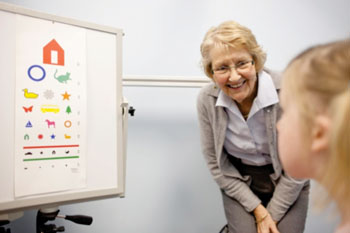Advanced 3D Facial Imaging Designed to Help in Early Identification of Autism
By MedImaging International staff writers
Posted on 19 Jan 2015
Autism is a range of closely related disorders observed in patients who exhibit a shared assortment of symptoms, including delays in learning to communicate and interrelate socially. Early detection of autism in children is the vital for optimized treatment. Using sophisticated three-dimensional (3-D) imaging and statistical analysis techniques, researchers have identified facial measurements in children with autism that may lead to screening tools for young children and provide clues to genetic causes.Posted on 19 Jan 2015
The researchers, from the University of Missouri (MU)-Columbia (USA), published their findings January 2015, in the Journal of Autism and Developmental Disorders. “We want to detect the specific facial traits of the face of a child with autism,” said Dr. Ye Duan, associate professor of computer science in the College of Engineering at MU. “Doing so might help us define the facial structures common to children with autism and potentially enable early screening for the disorder.”

Image: Dr. Miles was part of the team that helped identify facial measurements in children with autism that may lead to a screening tool for young children and provide clues to its genetic causes (Photo courtesy of Rebecca F. Miller).
Expanding upon earlier research using two-dimensional imaging, Dr. Duan, working with Dr. Judith Miles, professor emerita of child health-genetics in the MU Thompson Center for Autism and Neurodevelopmental Disorders, used a system of cameras to photograph and generate 3D images of children’s faces.
The children chosen were between 8 and 12 years old. One group of children had been diagnosed with autism by the Thompson Center; the other group consisted of typically developing children. Researchers photographed the faces of children using 3D imaging, which allowed scientists to measure distances along the curvature of the face instead of in a straight line as had been done in previous tests. Dr. Duan then ran advanced statistical analyses to measure minute differences in the facial measurements of each group.
“It all started from a clinical observation,” Dr. Miles said. “Over years of treating children, I noticed that a portion of those diagnosed with autism tend to look alike with similar facial characteristics. I thought perhaps there was something more than coincidence at play. The differences were not abnormal, instead they appeared analogous to similarities seen among siblings. Using 3-D images and statistical analysis, we created a ‘fine-tuned map’ of children’s faces and compared those measurements to the various symptoms they exhibit. By clustering the groups based on their facial measurements and recording their autism symptoms, we wanted to determine whether subgroups based on facial structure correlate with autism symptoms and severity.”
The group’s analyses revealed three distinctive subgroups of children with autism who had similar measurement patterns in their facial features. These subgroups also shared similarities in the type and severity of their autism symptoms. Dr. Miles noted that next phase of the research will include inviting other research groups to duplicate their findings and to perform DNA studies to search for specific genes associated with each subgroup. Identifying genes associated with each subtype of autism could potentially lead to the development of more effective treatments and drug therapies, she reported.
The study was funded in part by the US Department of Defense (DoD) Medical Research and Development Program.
Related Links:
University of Missouri-Columbia













